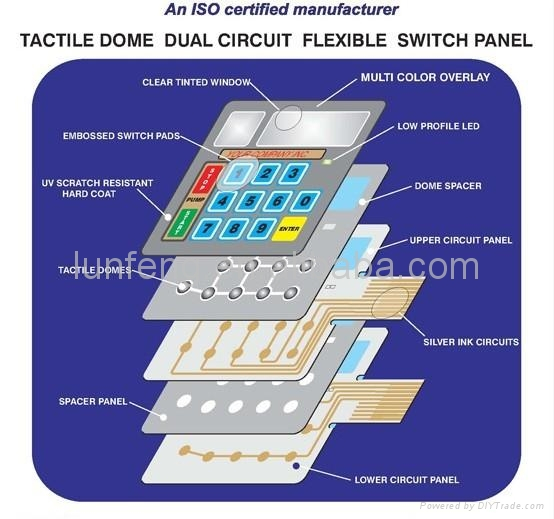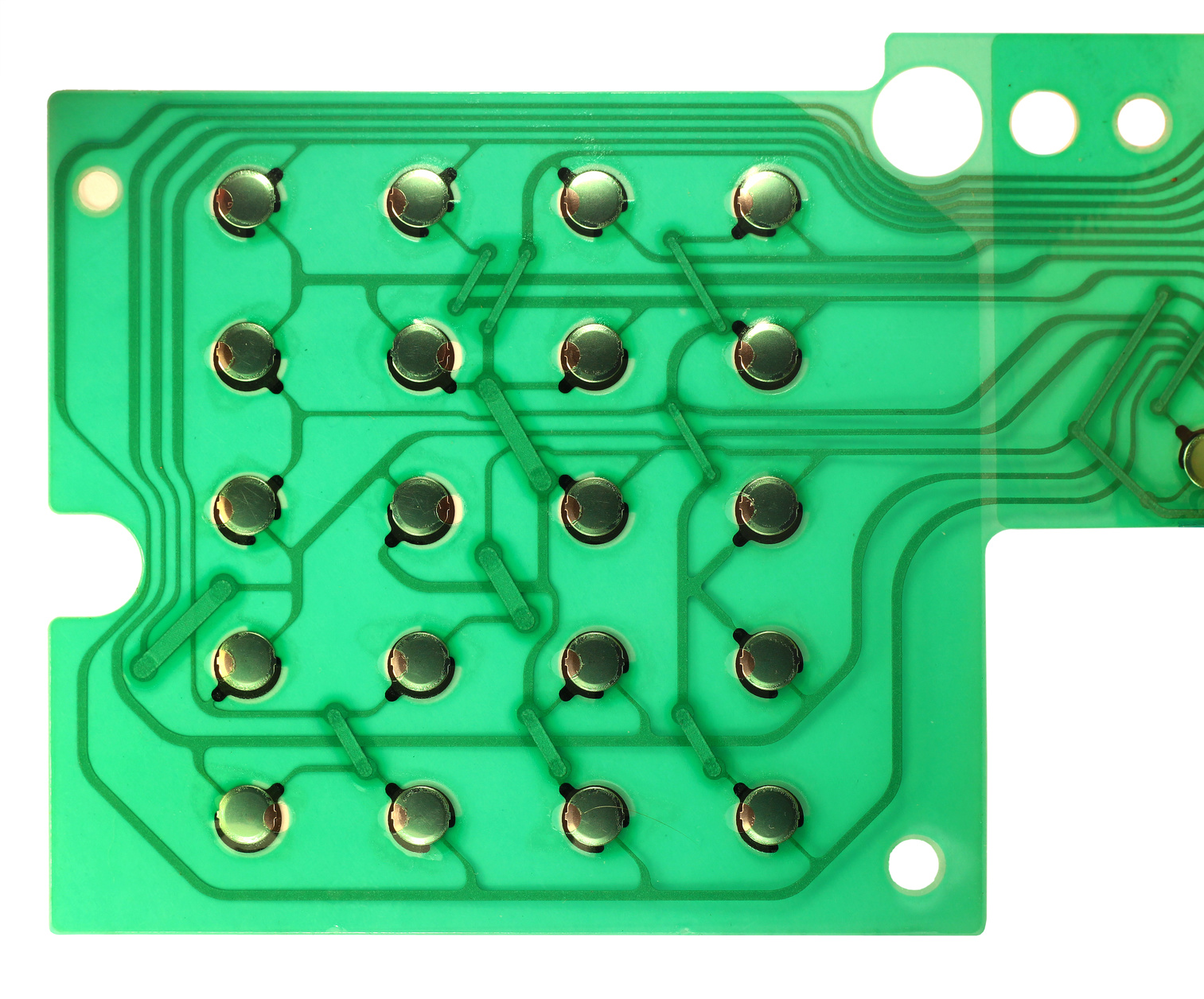Discover Exactly How Membrane Switches Feature and Their Duty in Modern Electronics
Membrane Switches stand for an advanced integration of technology and layout within the realm of modern-day electronics, acting as essential user interfaces in various devices. Comprised of several layers, these switches utilize pressure-sensitive devices to promote user interaction. Their applications extend numerous industries, from consumer electronics to clinical equipment, highlighting their flexibility and significance. Understanding the complexities of Membrane button capability and their broader implications in boosting individual experience welcomes further expedition into their design, advantages, and the cutting-edge growths forming their future in innovation.
What Are Membrane Switches?

Membrane switches are distinguished by their resilience and resistance to environmental factors, such as dust, wetness, and extreme temperature levels. They can be customized with different graphics, colors, and tactile feedback alternatives, enhancing user experience while maintaining visual appeal - membrane switches. Moreover, the incorporation of published circuits allows for seamless combination into gadgets, enhancing general capability.
The convenience of Membrane buttons is noticeable in their capability to sustain both intricate and basic control functions. They can include attributes such as LED signs and touch-sensitive modern technology, accommodating specific individual needs. As technology proceeds to advance, Membrane Switches remain essential for making it possible for intuitive and reliable interface, thus playing a crucial role in the innovation of modern digital gadgets.
Elements of Membrane Buttons
Membrane buttons are made up of a number of key parts that interact to create a practical and reliable interface. The main aspects consist of the visuals overlay, sticky layer, spacer layer, and conductive traces.
The visuals overlay serves as the interface, commonly printed on an adaptable substrate such as polyester or polycarbonate. This layer not only gives aesthetic appeal however likewise consists of tactile responses, aesthetic signs, and protective attributes. Underneath the graphic overlay lies the adhesive layer, which protects the button to the tool and guarantees durability against ecological anxieties.
The spacer layer is important for maintaining the needed space in between the graphic overlay and the circuit layer. When pressure is applied, this void permits for the activation of the switch. The conductive traces, generally made from silver or carbon, develop the electric pathways that complete the circuit when the button is engaged.
In addition, a support layer may be included for structural assistance and insulation. These parts collaborate effortlessly, making certain that Membrane switches are both durable and user-friendly, making them important in numerous contemporary electronic applications.
How Membrane Switches Job
Exactly how do Membrane Switches function effectively within digital tools? Membrane Switches operate the principles of pressure-sensitive modern technology, making use of a split building that consists of more visuals overlays, adhesive layers, and conductive aspects. When an individual uses stress to the button, the top layer flaws, permitting the conductive elements underneath to make get in touch with and finish an electrical circuit. This action causes the preferred function within the tool.
The design of Membrane switches is crucial for their reliable operation (membrane switches). The layers are thoroughly crafted to provide tactile responses, toughness, and resistance to environmental factors such as dampness and dust. The addition of domes-- little, elevated locations within the switch-- boosts tactile reaction, offering individuals with a noticeable click experience upon activation
In addition, Membrane buttons can be personalized in terms of size, form, and graphics, making them ideal for different applications. They are frequently utilized in control panels, clinical gadgets, and customer electronics because of their streamlined layout and reliability. On the whole, the efficient performance of Membrane switches is crucial in improving user communication and making sure seamless operation in modern-day digital tools.

Applications in Modern Tools
Using their unique design and functionality, Membrane buttons have ended up being indispensable elements in a large range of contemporary digital devices. These flexible interfaces are used in consumer electronics, industrial tools, clinical gadgets, and auto controls, supplying seamless individual interaction.
In consumer electronic devices, Membrane switches are generally located in devices like microwaves, cleaning machines, and various other household gadgets, where they make it possible for instinctive control with a streamlined profile. Their low-profile design facilitates integration into compact tools, enhancing visual charm Continued without jeopardizing performance.
In industrial applications, Membrane Switches act as control board for machinery, offering resilience and resistance to extreme environments. Their capability to endure wetness and contaminants makes them suitable for usage in production and handling sectors.
Clinical tools likewise gain from Membrane buttons, which are developed to be very easy to clean and keep, guaranteeing hygiene in medical settings. They are usually used in analysis Discover More devices, person tracking systems, and mobile clinical tools, where reliability is extremely important.
Benefits of Membrane Buttons
Among the key benefits of Membrane buttons is their adaptability, which allows them to be customized for a range of applications across numerous markets. These buttons can be developed in different forms and dimensions, accommodating special product needs while offering smooth combination right into gadgets. Their slim profile allows a streamlined and small style, typically improving the aesthetic appeal of electronic products.
Another substantial benefit is their toughness - membrane switches. Membrane buttons are normally immune to dirt, moisture, and chemicals, making them excellent for extreme atmospheres. This strength expands their life expectancy contrasted to typical mechanical switches, decreasing the demand for regular replacements
Furthermore, Membrane Switches offer cost-effectiveness. The manufacturing procedure entails printing modern technologies that minimize manufacturing expenses, especially for huge runs. This cost, integrated with low maintenance requirements, makes them an eye-catching option for producers.

Final Thought
In verdict, Membrane Switches represent a significant innovation in user interface innovation within modern-day electronic devices. As the need for user-friendly and resistant interfaces proceeds to grow, the function of Membrane switches in shaping individual experience will unquestionably broaden.
Membrane Switches stand for a sophisticated combination of technology and design within the world of modern electronic devices, offering as important user interfaces in countless gadgets.In the world of contemporary electronics, Membrane Switches serve as important elements that help with individual communication with gadgets. As technology proceeds to progress, Membrane Switches stay essential for enabling user-friendly and reliable customer interfaces, thereby playing a critical function in the innovation of modern-day electronic tools.
Just how do Membrane Switches function efficiently within electronic devices? In general, the efficient functioning of Membrane buttons is pivotal in enhancing individual communication and making sure seamless operation in contemporary digital devices.